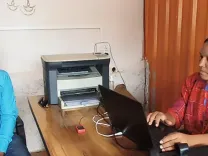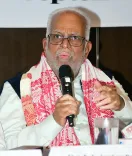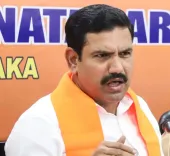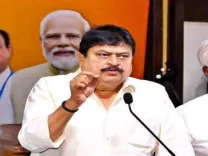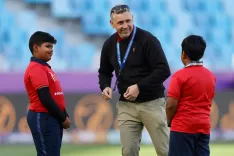Did Delhi's NDMC ‘Mango Festival’ Captivate Diplomats and Fruit Enthusiasts?
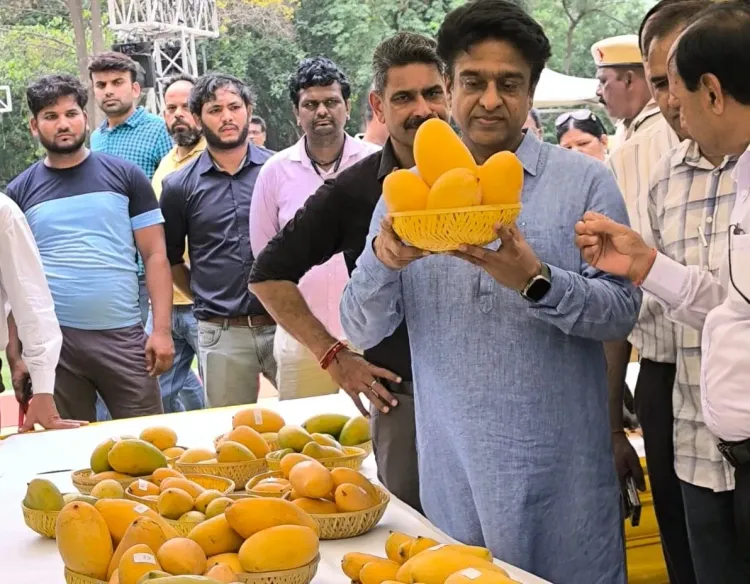
Synopsis
Key Takeaways
- Over 500 mango varieties showcased.
- Platform for cultural exchange and culinary experiences.
- Free entry for all visitors.
- Participation from farmers, researchers, and vendors.
- Focus on empowering local farmers.
New Delhi, July 6 (NationPress) A significant turnout of attendees, comprising diplomats, officials, and mango enthusiasts from around the city, participated in the concluding day of the New Delhi Municipal Council’s two-day ‘Khaas-ye-Aam’ mango festival, as reported by an official on Sunday.
Vice Chairman of NDMC, Kuljeet Singh Chahal, noted that the festival serves as a distinctive platform for cultural exchange and culinary delight.
Chahal emphasized that aligned with the visionary goals of Viksit Bharat @2047, as envisioned by Prime Minister Narendra Modi, the NDMC Mango Festival acts as a conduit for empowering farmers, fostering agricultural innovation, and celebrating the rich agricultural diversity of India.
He stated that by showcasing over 500 mango varieties from various regions of the country and facilitating direct interactions with farmer societies, research institutions, and vendors, the festival truly represented the essence of a self-reliant India.
A spokesperson from a research institute mentioned that shortly, a special mango breed named “Sindoor” will be developed in honor of Operation Sindoor.
More than 300 varieties of mangoes were exhibited by two government research institutions, alongside growers and farmer societies at the festival.
The ‘Khaas-ye-Aam’ mango festival commenced at the Palika Services Officers’ Institute (PSOI), Vinay Marg, Chanakyapuri, with free admission for all attendees.
PSOI Secretary, Krishan Kumar, shared that 25 mango vendors set up stalls to offer a variety of mango products during the festival.
Among the showcased mango varieties were – Arunika, Ambika, Sansesan, Tomy, Fajali, Langra, Lucknowa Safeda, Kachcha Meetha, Dudhiya Gola, Matka Gola, Safeda Amin, Desi Kism, Desi Gola, Desi Tuharu, Munjar Amin, Kism Azad, Gulab Khas, Gulab Jamun, Dashari, Amrpali, Hathi jhool, Malika and Chausa.
Participants along with government research institutions such as the Indian Council of Agricultural Research (ICAR)-Central Institute for Subtropical Horticulture (CISH), Lucknow, showcased around 250 varieties including prominent ones like Dashehari, Langra, Chausa, Mallika, Amrapali, and several hybrids.
The ICAR - Indian Agricultural Research Institute (IARI), New Delhi, also presented its exclusive varieties, including Pusa Lalima, known for its unique color.
A total of 10 farmer societies and individual exhibitors presented over 100 varieties at their respective stalls during the Mango Festival, as stated by Krishan Kumar.
He also mentioned that there was a competitive showcase of various mango types from each farmer, including varieties like Dashehari, Mallika, Amrapali, Chausa, and mixed fruits.
Various entertainment and recreational activities were organized for visitors and children.
One of the main attractions of the Mango Festival was the 10 stalls dedicated to mango products, featuring an array of preparations, recipes, juices, shakes, chutneys, murabba, and pickles, presented by farmers, cooperatives, vendors, and leading restaurants and hotels.
The Mango Festival is part of NDMC’s ongoing initiatives to promote cultural and seasonal festivities that unite communities and celebrate India’s extensive agricultural diversity, according to Chahal.
This event provided an exhilarating opportunity for attendees to sample and purchase a diverse range of mango varieties sourced from all over the country, along with value-added mango-based items such as juices, pickles, pulps, and desserts.

